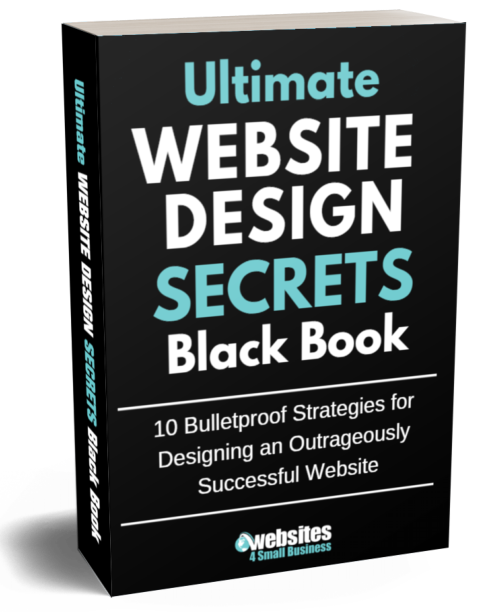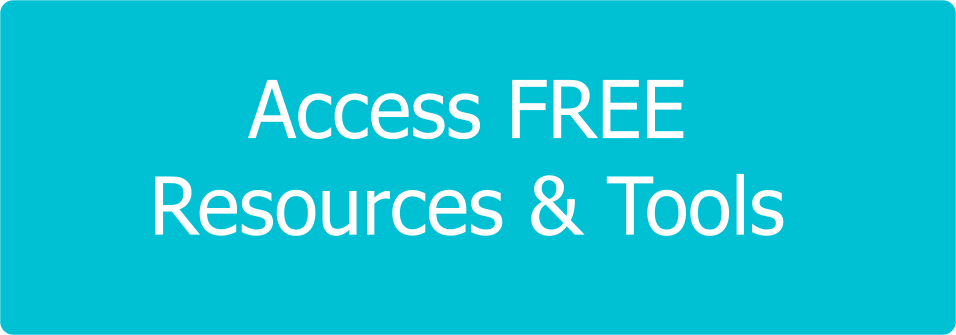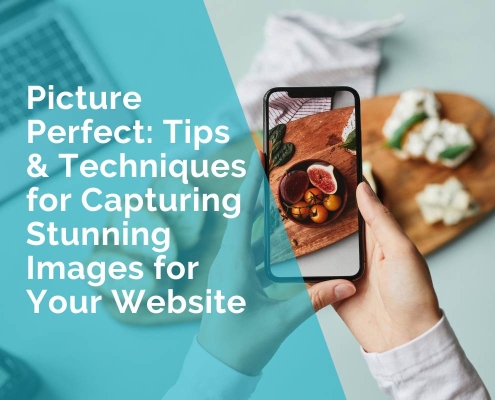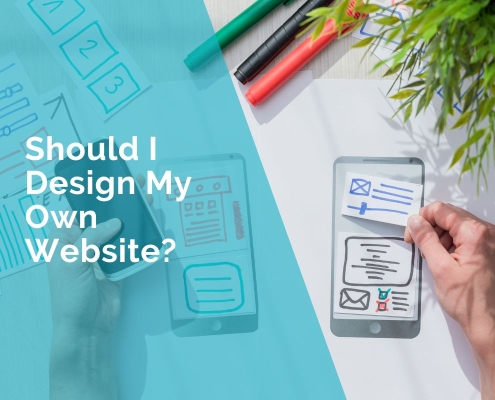How to Improve Your eCommerce Conversion Rate
Users are becoming more sceptical of online content. Social media shows them hundreds, even thousands of ads each day. Winning their attention and guiding them to take your desired action is difficult. In this article, we’re going to cover how to improve your eCommerce conversion rate.
Website traffic is worth nothing unless, at some point during the user’s visit, they “convert”, or perform an action with some kind of monetary value associated with it. A conversion action isn’t always as straightforward as buying a product. Sometimes it’s more subtle, like watching a video, opting into a newsletter, or spending a particular amount of time on a page reading content.
The following tips have come from being in the eCommerce trenches experimenting with what does and doesn’t resonate with customers.
But enough with the introduction, let’s get into it.
1. Users need to understand what you sell immediately.
When a user arrives at your eCommerce store, they want to know what you sell. If you leave them guessing, they’re going to leave. The small amount of effort required to scroll around and figure out the answer to this question is too much for many daydreaming customers.
There are a few different ways to explain to users what you sell. Images and video are particularly effective. Prominent headlines also work very well. Aim to combine these methods and leave no doubt in your visitor’s mind what kind of shop they’re visiting.
To be sure you’ve done the job right, talk your friends and family into reviewing the top part of your store’s design to see if they understand what you’re selling. Listen to what they say, but just remember not to take their feedback too personally.
2. High-quality photography builds trust.
High-quality stock images work the same way as a well-tailored suit or dress. They build trust with the user because they’re engaging and well-composed. On the other hand, poor-quality pictures have the same effect as turning up to a business meeting in your pajamas!
You don’t necessarily need to pay for stock images to find great photography. There are plenty of services around, like Unsplash and Pexels, with a great range of royalty-free images.
3. Excellent web design feels familiar.
Websites that flaunt exciting 3D modeling and with interactive components flying around the screen are cool. But they distract the user from their purpose and ultimately hurt your conversion rate.
The best eCommerce store design is the one that draws attention to the products without forcing the user to spend any of their mental credits. If a design breed familiarity, the user is more likely to trust the associated brand and complete their purchase.
Designing a high-converting eCommerce site is not for the faint of heart. The best results usually come from working with a reputable designer or studio, but this isn’t always cheap. If you don’t have the budget to pay a professional, aim to find a new theme that catches your eye. Once you’ve found something that’s almost what you want, you can approach a designer or a developer to help you make some tweaks for a reduced price.
4. Upsells convert the best.
Once a customer’s wallet is open, they’re much more likely to continue spending money. Presenting them with slightly lower-cost products straight after they’re purchased is a great way to improve your average conversion rate and cart value.
The trick to an effective upsell is keeping your user engaged and avoiding any prompts that tell them the shopping experience has ended until they’ve had an opportunity to look at your next pitch.
Depending on which eCommerce platform you’re using, there are plenty of decent upsell plugins going around. Do a bit of research on your eCommerce platform’s plugin page to find an upsell plugin that allows deep customization and one-click purchasing.
5. Build relationships with content.
Shouting your elevator pitch at someone walking by is an ineffective way of selling products. Unless the person desperately needs what you’re selling at that very moment, they’re likely to keep walking.
However, if you’ve had a few conversations with the same person in the past, they’re much more likely to listen to your pitch and might even purchase what you’re selling.
Building a relationship with your audience is one of the ways content can drive your conversion rate up. If you’re giving visitors valuable, free content, they will consider that you’ve done them a tiny favor. This relationship helps when it comes time to ask them to buy what you’re selling.
6. Email is still the king of conversion.
If you can get into a customer’s inbox, you’ve got a much better chance of having an uninterrupted conversation with them. Almost every other marketing medium operates in direct contrast, with hundreds of different forces pull on a customer’s concentration.
Don’t let your email list go cold. Keep your list engaged by giving them a reason to open your emails. Every so often, drop a hard-selling pitch into your emails and watch your conversion rate skyrocket.
7. Get your mobile arrangement right.
It’s no longer enough to preach the concept of mobile responsiveness. If your site isn’t already responsive, you’re probably in too deep.
The order that you arrange content on your selling pages is significant. Mobile devices operate with a small amount of screen real estate, and users will need to read each section before moving on to the next.
Adding copy or images that break the flow of the page adds friction to the buying process and ultimately affects your conversion rate.
8. Reduce the number of clicks required to buy.
Reduce the number of clicks required to checkout follows the general philosophy of making it easier for users to buy from you. This same principle applies to the amount of information a user has to provide before purchasing.
The fewer opportunities you provide customers to reconsider their decision, the more likely they are to sail through the process.
The best opportunity to do this is to review your cart functionality. Avoid carts that make the user go through multiple steps to check out. Aim to capture their personal details and payment details on the same screen.
The only argument against this approach is that it’s harder to launch cart abandonment sequences if users don’t click a button or press a link during the checkout process. However, a bit of clever JavaScript on your form can initiate the cart abandonment sequence as soon as the email field has a valid address added.
If you’re not comfortable writing JavaScript, find a developer to help you.
9. Test absolutely everything.
Testing every headline, image, description, product, color, placement, and arrangement on your site will give you complete knowledge of what resonates with your customers. Every test won’t give you a conclusive answer, and that’s okay. The important thing is to keep constantly testing and iterating.
No matter what any guru says, there’s no magic formula to building a “perfectly optimized” website. The only way to find this formula is to make hypotheses, run tests, draw conclusions, and iterate.
Google offers a decent split testing called Google Optimize. It can be installed directly by a 3rd party script or through Google Tag Manager. Once you have set up Google Optimize, create a list of changes you think may help your conversion rate and then plan to run a test every two weeks.
10. Customer service can help.
Who is in a better position to have a candid conversation with potential customers about their needs and point them in the right direction?
Good customer service teams are worth their weight in gold because they directly access the potential customers sitting on the fence. Providing advice and guiding these visitors towards the right products guarantees sales.
There is no shortage of great customer service platforms available. A few notable mentions are HelpScout, Intercom, Zendesk, and Drift. These tools also facilitate automatic responses to help thin down the volume of work your customer service team needs to handle. Installing any of these customer service tools is as simple as adding a little 3rd party script to your eCommerce website.
11. Free shipping is motivating.
Paying for shipping in addition to paying for products can make customers feel like they’re getting slapped with a cost that’s not within their budget. It defies logic, but customers feel like they’re getting a bargain when shipping is free, even if the product is more expensive.
Depending on what you’re selling, free shipping on all products may not make sense. It can kill already small margins. If this is the case, you can try to motivate customers to increase their cart values to unlock free shipping. For instance, promising free shipping on all purchases over $50.
12. Urgency is your friend.
In general, consumers love to delay purchasing decisions. It’s easier to procrastinate than take action. However, when faced with the possibility of losing an opportunity, potential customers are much more likely to purchase.
Creating urgency is relatively simple. Run a limited-time sale and add a timer in a prominent location on your website. It’s better to be less subtle with timers and make sure visitors have to see how much time is left before their opportunity disappears.
The tricky part of creating urgency is that it needs to be legitimate, at least in the eyes of your potential customers. If your visitors suspect your website’s timer isn’t connected to real scarcity, they will become suspicious and less likely to purchase.
Conclusion
Of all these tips, number 9 is by far the most important. Test absolutely every variable available. I would even recommend that as you apply the information in this list, you test each one to measure its impact on your conversion rate.
Once you apply a change that works, try repeating it to other parts of your store. The best improvement your eCommerce conversion rate can receive is incremental and controlled!
Author’s Bio: Lori Wade is a content writer for cleancommit.io who is interested in a wide range of spheres from eCommerce to web development and new technologies. If you are interested in the above topics, you can find her on LinkedIn.















